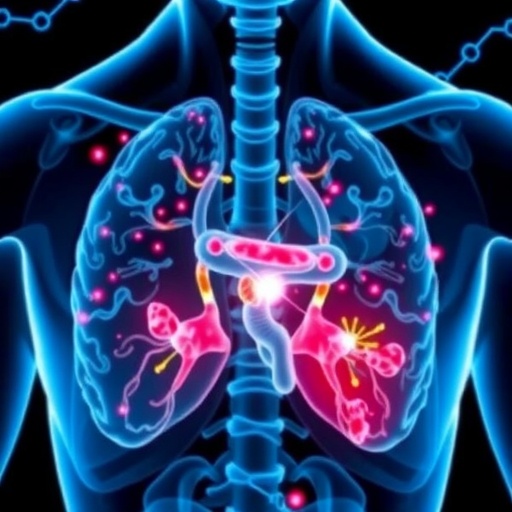PROTECT YOUR DNA WITH QUANTUM TECHNOLOGY
Orgo-Life the new way to the future Advertising by AdpathwayIn the complex and high-stakes world of pharmaceutical development, the journey from laboratory discovery to approved human therapeutic is fraught with challenges. One of the most vexing problems is the unpredictability of drug toxicity when transitioning from preclinical models—typically animals or cell cultures—to human patients. Despite rigorous safety testing in preclinical phases, there have been alarming instances where drugs deemed safe caused severe, even fatal, adverse reactions in humans. Iconic cases such as TGN1412, an immunotherapy that induced a catastrophic cytokine storm shortly after administration in a UK clinical trial, and Aptiganel, a stroke drug that exhibited severe neuropsychiatric side effects in humans despite promising results in animals, starkly underscore this translational disconnect.
A breakthrough approach to resolving this translational gap has now been pioneered by a research team led by Professor Sanguk Kim at POSTECH’s Department of Life Sciences and Graduate School of Artificial Intelligence. This multidisciplinary team, including Dr. Minhyuk Park, Mr. Woomin Song, and Mr. Hyunsoo Ahn, has developed an innovative machine learning framework that leverages biological differences between species to forecast drug toxicity more accurately in humans. Their findings, recently published in the prestigious journal eBioMedicine, set a new standard for preclinical drug safety evaluation by focusing on the fundamental genotype-phenotype disparities that exist between humans and experimental models.
At the core of this novel methodology is the concept of “Genotype-Phenotype Difference” (GPD)—the inherent biological variations between genomes and resulting phenotypes across species. Recognizing that genetic targets of drugs regulate cellular behavior differently in animal models compared to humans, the team constructed a predictive system that integrates three pivotal biological dimensions: gene essentiality, tissue-specific gene expression patterns, and gene network connectivity. Gene essentiality reflects the criticality of gene function for cell survival; tissue-specific expression profiles determine where and how genes operate within different biological contexts; and network connectivity maps the complexity of gene interactions that underpin functional pathways.
Empirical validation of the model was conducted on an extensive dataset encompassing 434 drugs flagged as hazardous and 790 drugs that successfully passed human trials. The results revealed a robust association between GPD attributes and clinical drug failure due to toxicity. Remarkably, the machine learning model demonstrated a substantial leap in predictive accuracy relative to traditional chemical structural analyses of drugs. Quantitatively, the model improved the area under the precision-recall curve (AUPRC) from 0.35 to 0.63 and achieved a receiver operating characteristic area under the curve (AUROC) of 0.75, compared to a near-chance 0.50 baseline for conventional approaches. This indicates a significant reduction in false positives and an enhanced ability to identify truly toxic therapeutics.
Beyond just retrospective assessment, the team put their AI framework to a stringent chronological validation test. By training the model exclusively on drug data available up to 1991, it successfully predicted, with 95% accuracy, drugs that were subsequently withdrawn from the market post-1991 due to unforeseen toxicity. This temporal robustness underscores the practical utility of the model in real-world drug surveillance and early safety screening, enabling pharmaceutical companies to flag at-risk candidates before costly and ethically fraught human trials commence.
This research marks a transformative step forward by scientifically quantifying and incorporating interspecies biological differences that have been largely overlooked or difficult to model within existing drug development pipelines. Traditionally, translational failures stem from oversimplified assumptions that animal model responses directly reflect human biology. However, the nuanced genotype-phenotype relationships encoded within each species’ genome influence cellular responses to pharmacological agents in a context-dependent manner, which this framework elucidates and harnesses to refine predictions of drug safety.
By adopting this GPD-centric approach, pharmaceutical research and development can realize multiple benefits. First, it promises to considerably diminish the pipeline attrition rate caused by late-stage toxicity, which is a major contributor to exorbitant costs, time delays, and ethical concerns in drug discovery. Second, it offers a mechanism to safeguard patients by preemptively identifying pharmaceuticals likely to cause harmful side effects upon human exposure. Third, as biological datasets continue to expand—spanning genomic annotations, transcriptomic profiles, and protein interaction networks—the predictive reliability and scope of this model are poised to grow exponentially.
Professor Sanguk Kim emphasized the pioneering nature of their work, noting, “This is the first attempt to incorporate differences in genotype-phenotype relationships for drug toxicity prediction. Our framework enables early identification of high-risk drugs in clinical development.” Co-first authors Dr. Minhyuk Park and Mr. Woomin Song echoed the practical impact: “The human-centered toxicity prediction model will be a very practical tool in new drug development. We anticipate that pharmaceutical companies will be able to screen out high-risk drugs in advance at the preclinical stage, thereby improving development efficiency.”
The strategic integration of advanced machine learning with deep biological insights represented by this study exemplifies the future direction of translational medicine and computational biology. Moving beyond purely chemical descriptors, this approach navigates the complex systems biology underlying drug responses across species, opening avenues towards more reliable and ethical drug discovery processes. Moreover, this method aligns with the overarching imperative of precision medicine—tailoring therapeutic strategies to the unique biological contexts of individual patients, beginning with a better understanding of species-specific genetic and phenotypic nuances.
Supported by the National Research Foundation of Korea, the Ministry of Science and ICT, the Medical Device Innovation Center, and the Synthetic Biology Human Resources Development Program, this research serves as a pioneering example of how interdisciplinary collaboration can accelerate medical innovation. By bridging the critical translational gap, this technology not only has the potential to revolutionize pharmaceutical pipelines worldwide but also offers hope for safer, more effective therapeutics that benefit patients globally.
As the pharmaceutical industry increasingly adopts such sophisticated machine learning tools, the hope is that catastrophic clinical trial failures will become a rarity rather than a distressing norm. Ultimately, this innovative framework underscores the vital role of understanding biological diversity and leveraging computational power, offering a paradigm shift in predicting drug toxicity and safeguarding human health.
Subject of Research: Drug toxicity prediction and genotype-phenotype differences between preclinical models and humans.
Article Title: Drug toxicity prediction based on genotype-phenotype differences between preclinical models and humans
News Publication Date: 28-Oct-2025
Web References: DOI Link
Image Credits: POSTECH
Keywords: Health and medicine, Drug therapy, Drug safety, Clinical medicine, Translational research, Translational medicine, Species interaction, Adaptive systems, Artificial intelligence, Deep learning, Computer science, Machine learning, Biological models, Animal models
Tags: biological differences in speciescytokine storm in clinical trialsdrug toxicity predictioneBioMedicine research publicationinnovative drug evaluation methodsmachine learning in drug developmentmultidisciplinary approach in pharmaceuticalsneuropsychiatric side effects of drugspharmaceutical safety testingpreclinical models vs humansProfessor Sanguk Kim studytranslational medicine challenges


 2 hours ago
10
2 hours ago
10





















 English (US) ·
English (US) ·  French (CA) ·
French (CA) ·